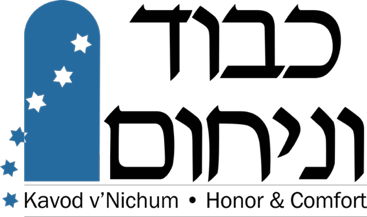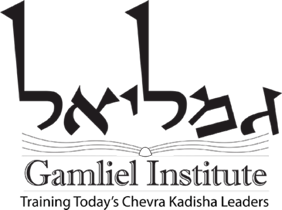What is a Chevrah Kadisha?
A Chevrah Kadisha (“Sacred Society”) is the traditional organization of women and men in every Jewish community that supports and assists families and communities at the end of life and after. First mentioned in tractate, Sotah, in the Talmud (circa 200 BCE – 500 CE) and documented as far back as the mid-16th century in Prague, the Chevrah Kadisha provides a continuum of care to the dying and to the mourning.
Nineteen murals from the Burial Society of Prague, painted in the late 1700’s, show this continuum beginning with bikkur cholim (visiting and praying with the sick person), sewing the tachrichim (burial garments), building the aron (coffin), performing the taharah (ritual purification of the body), and digging the kever (grave), the funeral procession and hesped (eulogy), and mourning after the burial.
Over the past century, North American Jewish communities and many Chevrah Kadisha abandoned the full range of traditional Jewish practices and limited the role of the Chevrah Kadisha to preparing bodies for burial. This abandonment derived from the Jewish communities’ acceptance of Western culture’s avoidance and denial of death and preference for relying on specialists, coupled with the lack of education in Jewish traditions relating to dying, death, and mourning.
Since the 1960s, there has been a resurgence of interest in North American Jewish communities the beautiful and profound Jewish rituals around death. Today, Chevrot Kadisha are being restored to their central role in Jewish communities, and many new Chevrot Kadisha have been established throughout North America in the past 50 years, and their role and tasks have grown to include providing support and care at the end of life and during the mourning period, from bikkur cholim through the yahrzeit (anniversary of a death).
To get a good idea of what Chevrah Kadisha work is about and how this work affects not only our dying but more importantly, our living, please read this article in Tablet Magazine, posted July 16th, 2019.
What Does a Chevrah Kadisha Do?
The scope of the Chevrah Kadisha’s tasks may vary from community to community, and can range from just the performance of taharah, to involvement in the entire continuum of Jewish end-of-life practices. A Chevrah Kadisha may also help in preparing meals of condolence, arranging shiva minyanim (prayer services in the home), organizing community educational events about death and dying, and performing other forms of community support to the dying and the bereaved. Some communities sew their own tachrichim (burial garments) and build their own aronot (caskets).
Today, many Chevrot Kadisha in North America focus their sacred efforts on the two rituals of taharah, the ritual preparation of a body (met/mettah) for burial, and shmirah, the ritual guarding of the deceased person’s body between death and burial. The shomrim, the guardians who sit with the body, ensure that the deceased is never left alone before burial. The taharah team of the Chevrah Kadisha prepares the body in a sacred and respectful traditional manner. The shomrim take turns sitting with the body while reading from the Psalms and other texts.
Performing taharah is like midwifing the soul of the deceased from this world into the next. The Chevrah Kadisha members work anonymously: they arrive, perform the taharah ceremonial ritual in beauty and with greatest respect, and then depart. This anonymity protects the dignity of the deceased. In taharah, the body is carefully and ritualistically bathed like a newborn, cleansed physically; then water is poured over the body to cleanse the deceased spiritually; finally, the body is dressed in burial garments and placed into the casket. Men generally perform taharah for a man and women for a woman; the members of the team can be modified as desired by the deceased or the family.
The burial shroud is generally a simple, inexpensive, white, hand-sewn cotton or linen garment designed to emulate the clothes of the Kohen Gadol, the High Priest of Temple times, for in death we are all equal and should be treated as the holiest of our People.
Maintaining an atmosphere of respect, dignity, and reverence is paramount during the entire time the chevrah members are in the taharah room. The prayers and readings recited during the ritual have both intellectual and spiritual value for both the deceased and the members of the taharah team.
To better understand Chevrah Kadisha, taharah, and shmirah, see the Jewish End-of-Life Practices page.
History of Chevrah Kadisha
The modern community organization we call the Chevrah Kadisha, did not come into being overnight. It has been developing over the past two millennia. The short history is that Jews have been taking care of their dead in respectful and loving ways throughout our history, but the manner in which this was done was not written down until 1626, when the Ma’avar Yabok was published in Italy. Since then Jews have been adapting this approach through local minhagim in each community, and today we see the same liturgy and procedures in place all over the world, with slight local variations.
Rick Light (with help from David Zinner) created a historical timeline showing Jewish historical events along with specific events in the evolution of Chevrah Kadisha practices, and a PowerPoint presentation discussing this timeline and the history of Chevrah Kadisha.
Click here to view the timeline
Click here to view the PowerPoint presentation that walks through this history

